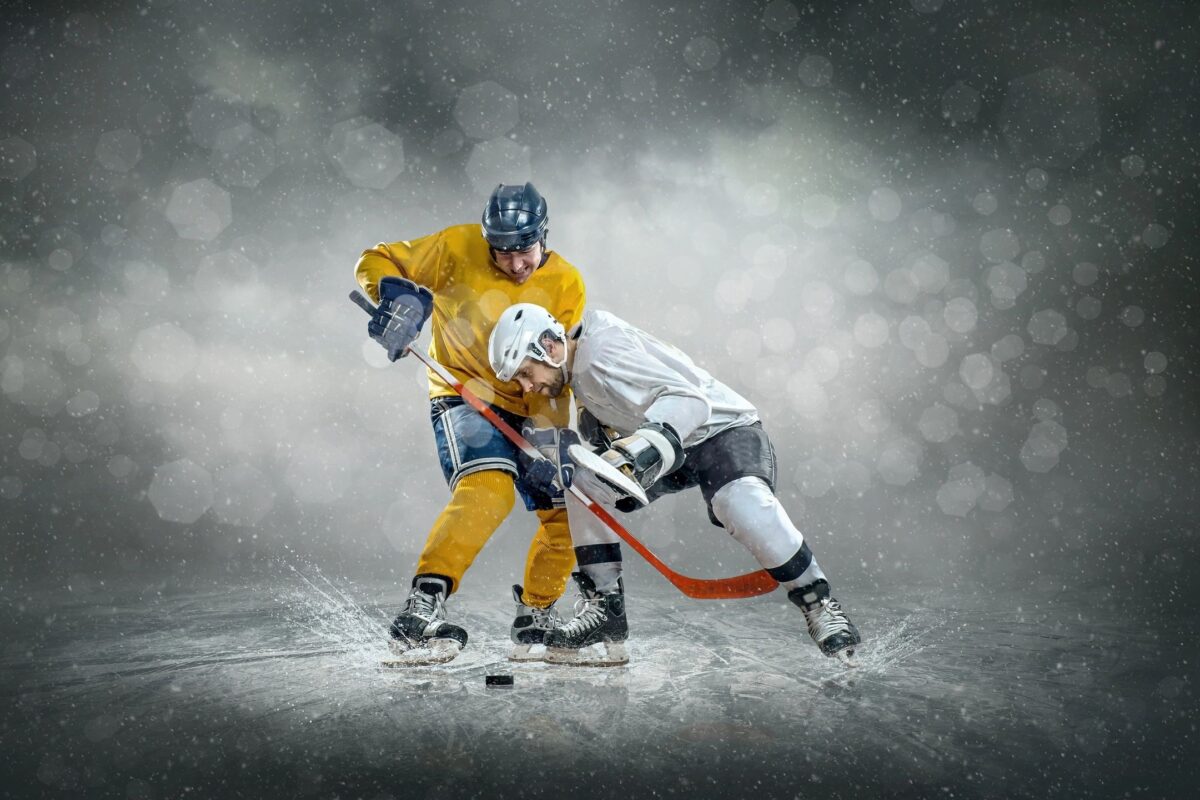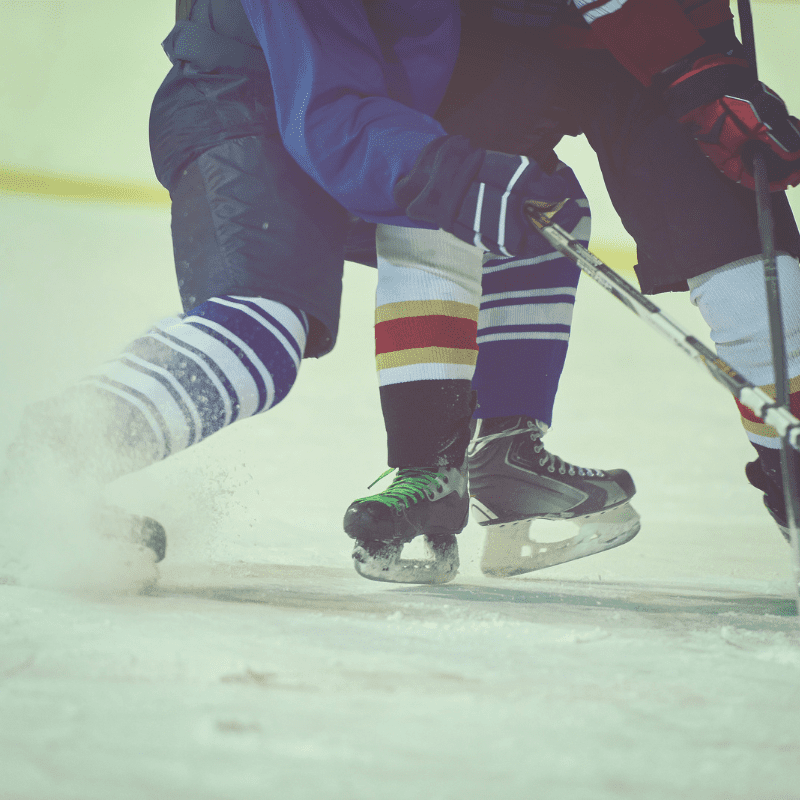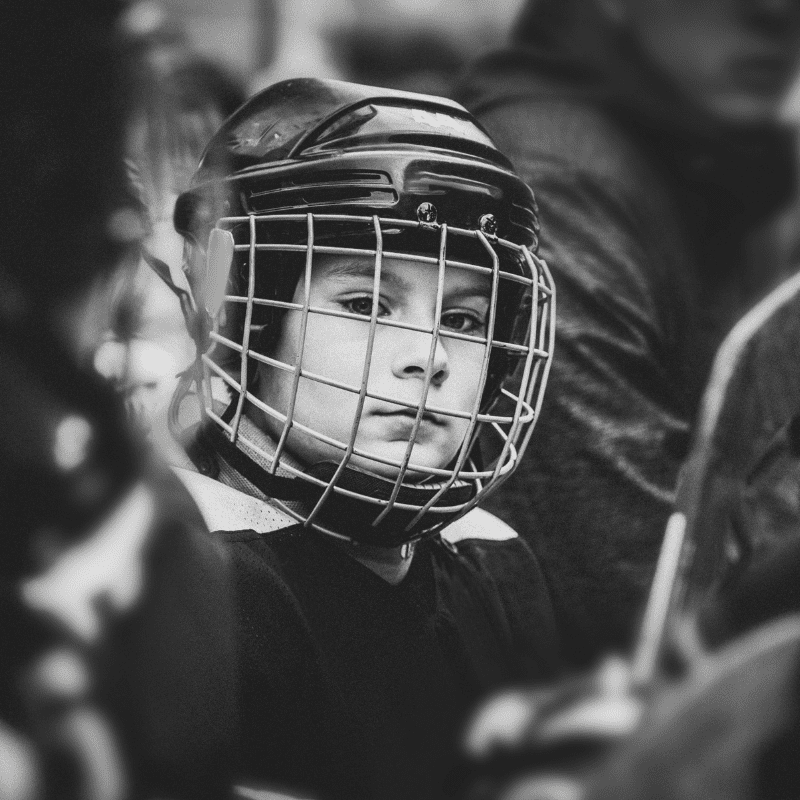Checking in Hockey Explained
Checking in Hockey is a fundamental defensive technique that involves using physical contact to gain possession of the puck and disrupt the opposing team’s play. It plays a crucial role in the strategy of the game, allowing players to apply pressure and create turnovers. In this article, I will explain what checking in hockey is, the different types of checking, and the rules and regulations surrounding this aspect of the game.

Key Takeaways:
- Checking is a defensive technique used in hockey to gain possession of the puck and disrupt the opposing team’s play.
- There are various types of checks in hockey, including body checks, shoulder checks, and hip checks.
- Checking is legal in the game, but there are rules and regulations that dictate how and when it can be performed.
- Proper techniques, such as positioning, timing, and follow-through, are essential for performing a safe and effective body check.
- Protective gear is crucial for player safety during body checks, and injury prevention should always be a priority.
Rules and Regulations for Body Checking
In hockey, body checking is an integral part of the game that allows players to gain possession of the puck and disrupt the opposing team’s play. However, some specific rules and regulations govern how and when body checking can be performed.
One of the fundamental rules of body checking is that it is only allowed when the opposing player has the puck.
Checking an opponent without possession of the puck is considered interference and is against the rules.
This ensures that body checking is used as a strategic defensive technique rather than a form of unnecessary aggression.
Additionally, there are guidelines for the timing and dispatch area of a body check.
Players must time their checks carefully to avoid hitting an opponent from behind or delivering a late hit.
The dispatch area refers to the targeted area on the opponent’s body where the check is aimed, typically the midsection and hips. This helps to minimize the risk of severe injuries and focuses the contact on a legal and controlled area.
If a player engages in an illegal check, they may face penalties such as a minor or major penalty, a game misconduct, or even a suspension, depending on the severity of the infraction.
These penalties are in place to enforce fair play, protect player safety, and discourage dangerous plays.
It’s important to note that at certain levels of youth hockey, there may be age limitations in place for body checking.
This is to protect younger players who may not have developed the same physical strength and skills as older players.
Age limitations ensure that body checking is introduced when players are better equipped to handle the physical demands of the game.
“(a) Body checking is prohibited in the 12 & under youth age classifications and below, all Girls’/Women’s age classifications and all non-check Adult classifications. These levels would be considered the Competitive Contact Category of play.” Rule 604 | Body Checking – USA Hockey Mobile Rulebook
Referees play a critical role in enforcing the rules and determining the legality of a check. They closely monitor the game, making judgments and penalties accordingly. Their presence on the ice helps maintain fair play and ensure player safety.
Proper Body Checking Techniques
To perform a successful and safe body check in hockey, players must master proper techniques that ensure player safety and effective play.
The key aspects of executing a body check involve approaching the opponent, positioning, and timing the check, making body contact, and following through with the check.
By implementing these techniques, players can gain an advantage over their opponents while minimizing the risk of injury.
Approaching the Opponent

Before delivering a body check, it’s crucial to approach the opponent with the right strategy.
This involves analyzing the opponent’s position, speed, and body language to anticipate their movements.
By understanding the opponent’s tendencies, players can position themselves optimally for the check, increasing the chances of a successful outcome.
Positioning and Timing the Check
Proper positioning and timing are vital for a successful body check.
Players should aim to position themselves in a way that allows them to generate maximum force while maintaining balance and stability.
Timing is also crucial, as a well-timed check can catch the opponent off-guard, increasing its effectiveness.
We have said before – remain vigilant and your head up. Maintain an alert posture while skating, constantly observing the ice and other players to ensure awareness of your environment. Being prepared for incoming checks, especially from blind spots, is crucial to avoid injuries.
Making Body Contact
When making body contact, players should aim for the opponent’s midsection and hips, using their shoulder or body to deliver the check.
The boards offer a surprising ally in reducing the impact, with their slight flexibility cushioning the blow more than being checked further away. Close proximity to the boards can also offer stability, helping you maintain your footing after a hit.

It’s important to avoid targeting the head, neck, and knees, as these areas are susceptible to serious injuries. By focusing on the midsection and hips, players can effectively disrupt their opponent’s balance and neutralize their play.
Following Through with the Check
Following through with the check is essential to maximize its impact and effectiveness. Players should continue driving through the check, using their legs and core muscles to generate power.
This follow-through not only adds force to the check but also ensures that the player remains balanced and ready for any subsequent plays.
Keep your momentum on the ice; staying in motion increases stability, much like riding a bicycle. Continue skating through any contact to quickly recover and remember that adept skating is crucial for mastering all hockey skills.

By mastering these proper body-checking techniques, players can become formidable defensive assets on the ice.
These techniques allow for controlled aggression and impactful play while minimizing the risk of injury. Players need to prioritize player safety and fair play while executing body checks in hockey.
Importance of Protective Gear and Injury Prevention

When it comes to body checking in hockey, player safety should always be a top priority. The physical nature of the game carries inherent risks, which is why wearing appropriate protective gear is crucial.
Protective gear not only helps absorb impact but also reduces the risk of severe injuries.
To ensure maximum protection, players should equip themselves with the essential gear, including helmets, shoulder and elbow pads, mouthguards, jockstraps, gloves, shin guards, and pants. These pieces of equipment are designed to shield vulnerable areas of the body and minimize the impact of body checks.
However, protective gear alone is not enough. Players must also be well-versed in proper checking techniques and exercise caution on the ice. By mastering these techniques, such as positioning and timing the check, players can reduce the risk of accidents and injuries during gameplay.
Injury prevention. Emphasizing player safety, wearing the right protective gear, and practicing proper techniques are paramount to keeping the game enjoyable and free from unnecessary harm.
FAQ
What is checking in hockey?
Checking in hockey is a defensive technique that involves using physical contact to gain possession of the puck and disrupt the opposing team’s play.
What are the types of checking in hockey?
The types of checking in hockey include body checks, shoulder checks, and hip checks.
What are the rules for legal checking in hockey?
Legal checking in hockey is only allowed when the opposing player has possession of the puck. Checking without the puck is considered interference and is against the rules.
What are the rules for illegal checking in hockey?
Illegal checking in hockey includes checking an opponent without possession of the puck, using excessive force, targeting the head or knees, or deliberately endangering an opponent. These actions can result in penalties and disciplinary action.
What are the key points to know about body checking?
Body checking is only allowed when the opponent is in possession of the puck, and it should primarily target the opponent’s midsection and hips while avoiding the head, neck, and knees. Good body positioning, timing, and balance are essential for executing a proper body check.
Are there age limitations for body checking in hockey?
Age limitations for body checking in hockey may vary depending on the level of play and local governing body regulations. These limitations are in place to protect younger players and ensure their safety on the ice.
Why is wearing protective gear important in hockey?
Wearing the appropriate protective gear in hockey is crucial to reduce the risk of severe injuries. Helmets, shoulder and elbow pads, mouthguards, jockstraps, gloves, shin guards, and pants help absorb impact and protect players from potentially dangerous situations.
What are some injury prevention tips for hockey players?
To minimize the risk of injuries while playing hockey, it’s important to practice proper checking techniques, always exercise caution on the ice, and follow the rules of the game. Additionally, maintaining good physical conditioning and attending skill development programs can help reduce the risk of hockey-related injuries.
References:
USA Hockey Rulebook, “STANDARD OF PLAY & RULE EMPHASIS – BODY CHECKING” Standard of Play & Rule Emphasis – Body Checking (usahockeyrulebook.com)
Straus, Travis, “The Ultimate Guide to Understanding Check in Hockey”; IceHockeyCentral.com; The Ultimate Guide to Understanding Check in Hockey – Ice Hockey Central; Published March 28, 2023



